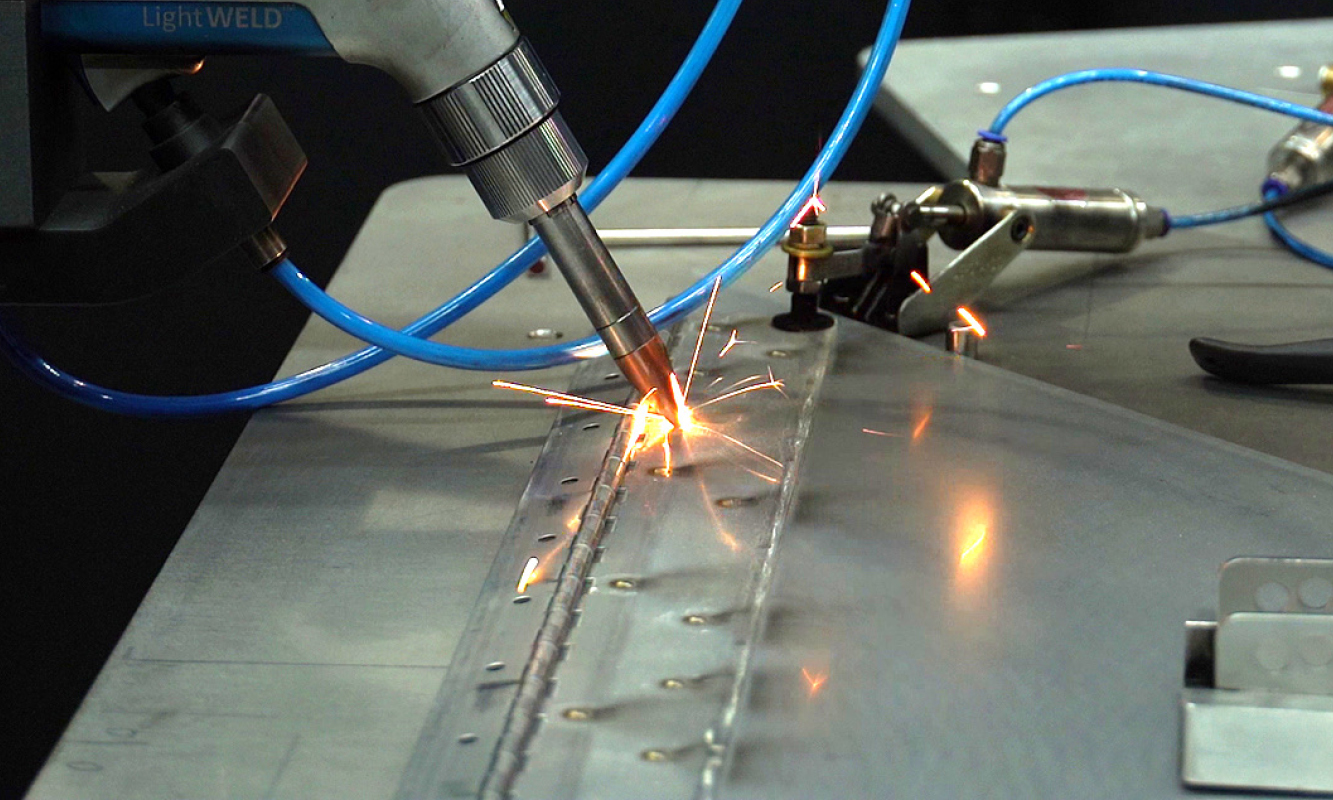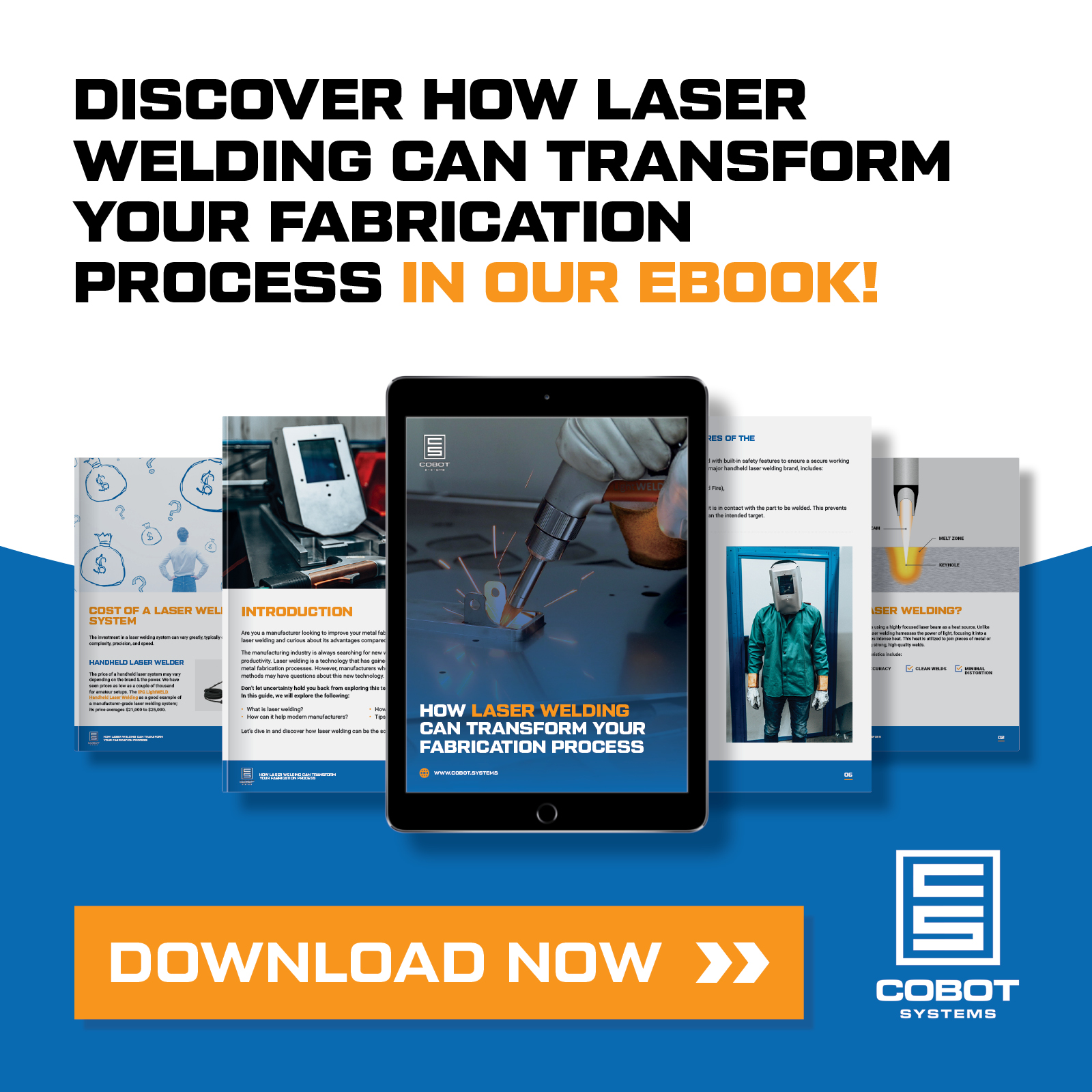Titanium is an almost perfect metal. Phenomenal strength, low weight, exceptional corrosion resistance, and even biocompatibility with the human body make titanium irreplaceable for aerospace, medical, petrochemical, and other critical industries.
However, welding titanium can be difficult. Read on to learn why laser beam welding can help achieve high titanium weld quality while minimizing the required operator skills.
The Challenges of Welding Titanium
Titanium has a high melting point (about 3035°F), so you need significant power to melt and fuse it. At the same time, titanium is highly reactive with oxygen at high temperatures and this oxidation can severely impact the weld quality. So, you need to input lots of heat, but preferably quickly and with maximum efficiency.
Contamination from impurities and inclusions can wreak havoc on titanium welds. Absolute cleanliness is non-negotiable with this material, making it more of a challenge during pre-cleaning and preparation.
See the table below for weldability factors of various titanium types. Every titanium alloy reacts to welding differently. The Ti-6Al-4V (AKA the “workhorse titanium”), is highly weldable, and it’s widely used in aerospace and other critical industries. However, welding processes can have varying success with other titanium alloys.
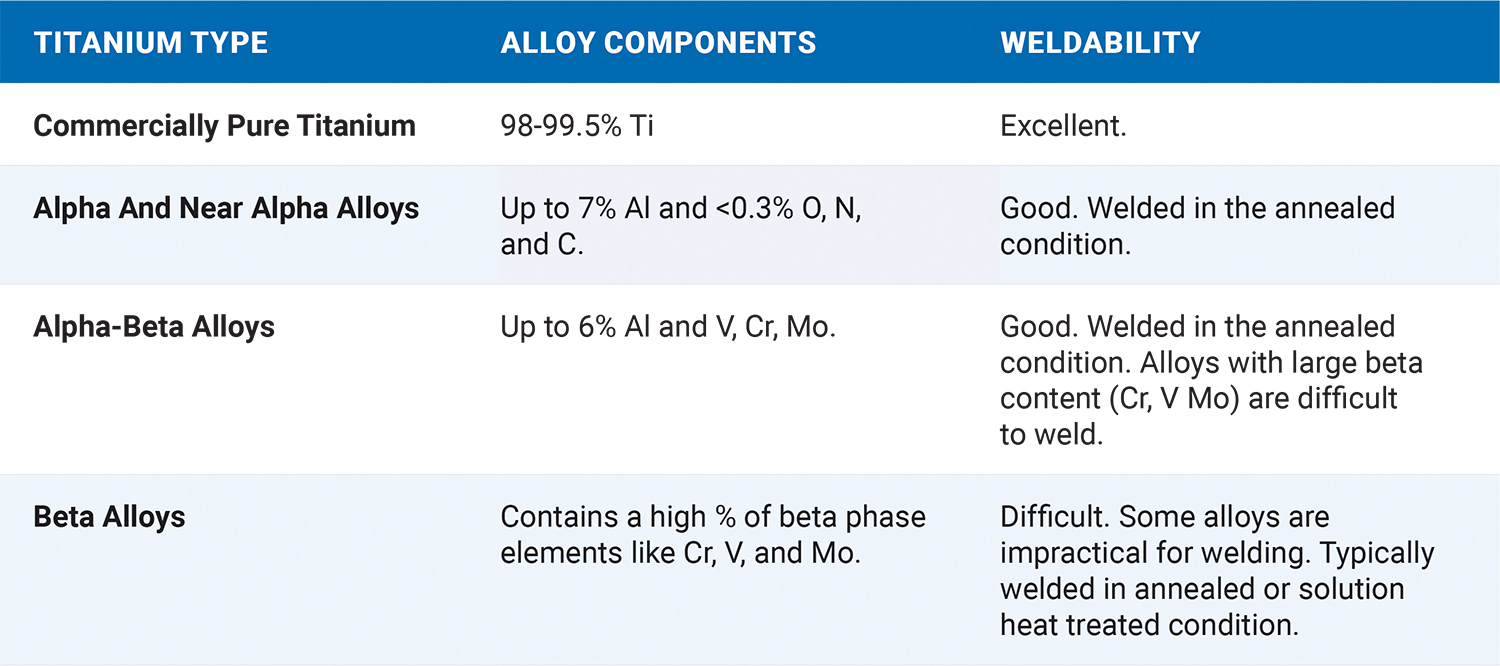
Titanium Oxidation
Titanium’s proclivity to pick up oxygen at high heat is one of the most challenging titanium welding issues. Oxygen and nitrogen are actually critical elements in many titanium alloys. They improve strength and other favorable characteristics. However, any additional oxygen and nitrogen inclusion from welding makes titanium brittle and weak.
Titanium oxidizes rapidly at temperatures above 1200°F (650 °C) and can include oxides in the weld. This is typically unacceptable, making it a welding defect. Shielding gas use is critical to contain titanium oxidation. However, it’s the high heat input that’s a precursor for excessive oxidation.
Weld And Heat Affected Zone (HAZ) Discoloration And Titanium Oxidation Acceptance

Unlike stainless steel, titanium’s discoloration turns white instead of black in its worst oxidized state. Likewise, the best titanium welds are silver, which is similar to the worst (white). However, excessively oxidized welds will have a strong purple to dark blue discoloration in HAZ, making it easy to differentiate between great and horrible welds.
Titanium’s surface oxidation is often indicative of the amount of weld contamination that may have occurred.
Why Laser Welding Titanium Can Help Improve Weld Quality
Laser welding can produce titanium welds with the same strength as the base material, depending on the alloy and the application. Generally, laser welding has numerous advantages over traditional welding methods for many metals, including titanium.
This study was conducted using IPG’s fiber laser and a robot to weld 6.5 mm tick Ti-6Al-4V titanium alloy with these conclusions:
• It was possible to weld the titanium alloy without defects typical for arc welding processes.
• Produced welds were sound, defect-free, with narrow width, and full penetration.
Precleaning With Laser Removes Impurities
Carbon, hydrogen, and other impurities from moisture, metal oils, grease, sharpie markers, and other contaminants can significantly affect the titanium weld quality. These must be removed with cleaning agents to minimize weld contamination.
Using the IPG Handheld Laser Welding System lets you clean with a laser before welding. Switch on the cleaning mode, put on an appropriate nozzle, and burn away the surface impurities before welding. This can help improve titanium weld quality because the laser will cover the entire surface along the weld area (up to 15mm wide).
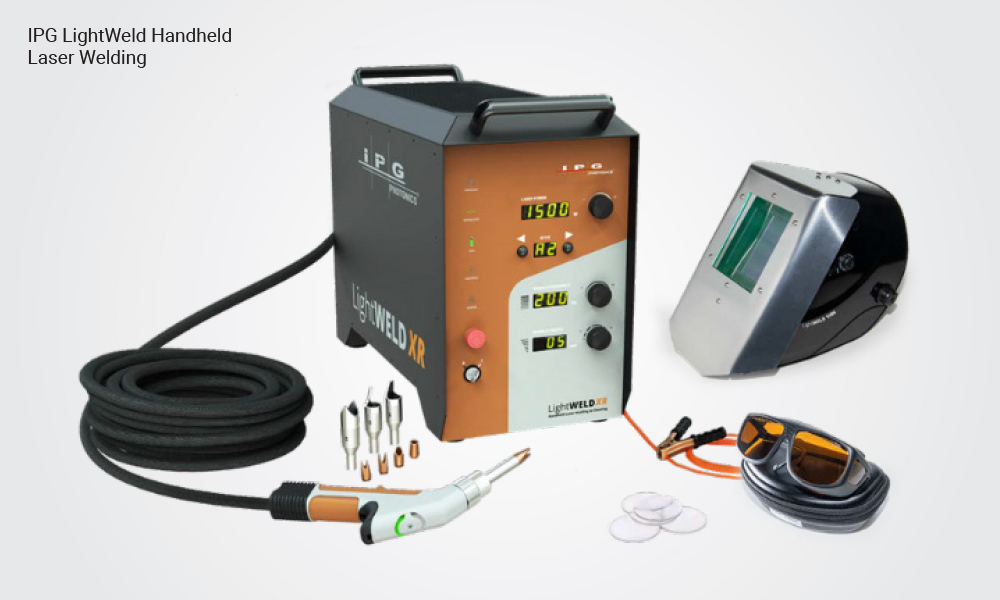
Low Heat Input Reduces Negative Changes In the Weld and HAZ
Since laser welding has a highly focused heat input, little heat is lost to the surrounding metal. As a result, laser welding has a lower heat input than traditional welding processes, like TIG. Reduced heat input may help reduce or avoid excessive oxidation, residual stresses, and excessive grain growth when welding titanium, depending on the alloy.
The IPG Handheld Fiber Laser Welder included with the Laser Welding Cobot System, supports pulsed laser welding. By oscillating the laser power output, you can additionally control heat input for maximum titanium weld quality.
High Welding Speed
Laser welding is about 4X faster than TIG welding, giving you a significant boost in productivity (see laser vs. TIG welding). Besides higher throughput, higher speed also means less heat input. Since the laser welding gun moves faster along the joint, heat has less time to propagate into the HAZ and the rest of the material. So, laser welding can reduce distortion, oxidation, and grain growth, leading to higher quality welds.
Deep Penetration
Highly focused laser can produce welds with a much better width-to-depth ratio than arc welding. Besides the benefit of lowering the weld size, a lower width-to-depth ratio can reduce the deposited filler metal. The more wire is fed into the weld pool, the higher the internal stress when the weld bead starts to cool down. So, reducing the filler metal requirement may help reduce the chance of cracking and distortion.
How Automating Laser Welding With a Robot Can Help Improve Weld Quality
Laser welding titanium manually can be beneficial for many applications. However, automating the laser welding process for low or high-volume production can significantly improve weld quality and profits.
Of all automation types, robotics are the most flexible and adaptable. However, traditional robotics aren’t usually applicable for low-volume production due to high skill requirements and long programming times.
Today, collaborative robots (cobots) are the most flexible and simplest automation solution for small and medium-sized manufacturers. For example, the Laser Welding Cobot System doesn’t require any special training. Your operators can use the no-code teach pendant provided with the cobot to prepare the welding path in minutes. Learn more details in our guide on choosing a laser welding cobot.
Cobot laser welding will give you:
• Better weld uniformity and significantly reduced errors from human factors.
• Repetitive results. Once you dial in the settings, you always get the same weld.
• Better production reliability. If the cobot operator can’t come in today, someone else can easily run the cobot. Your entire team can quickly learn how to laser weld with the right cobot system.
• More heat input control and welding speed than manual laser welding.
Simplified automation.
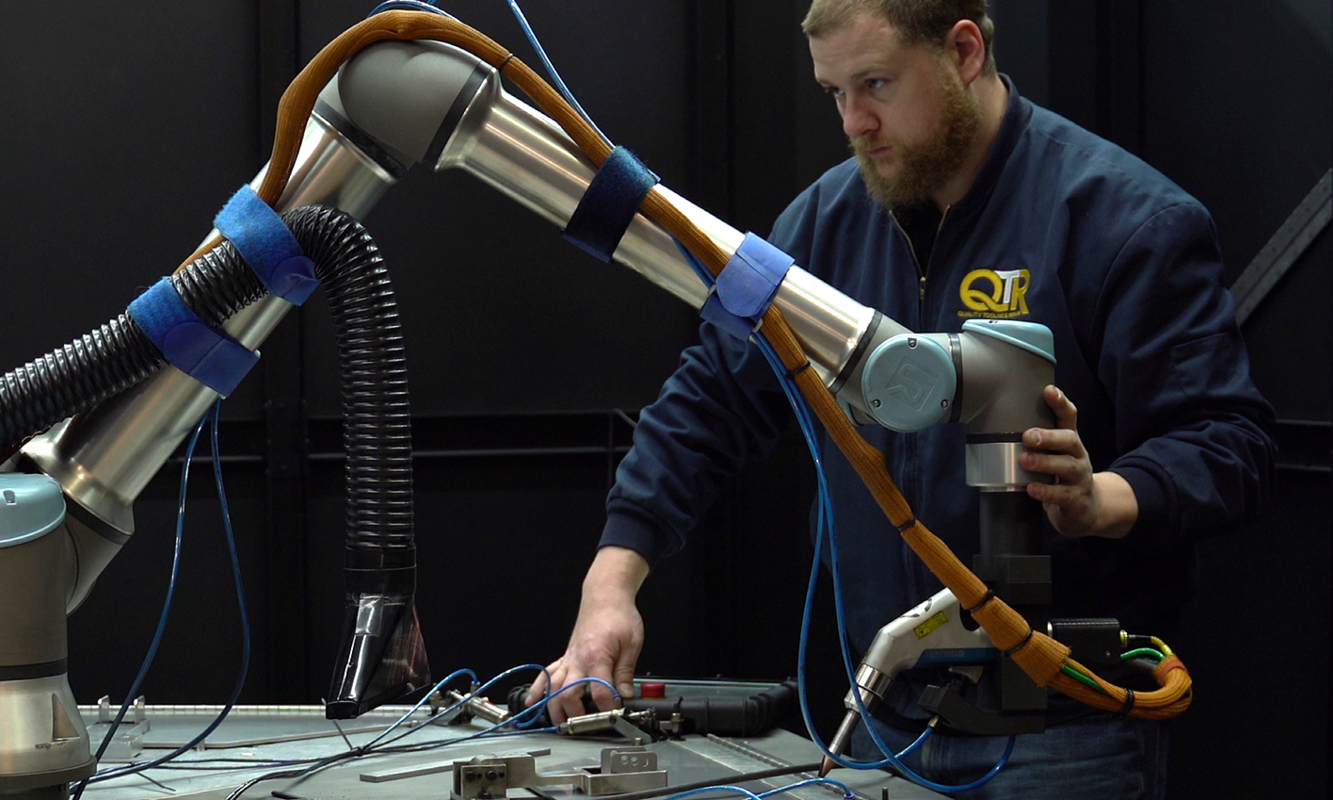
Take Your Welding To The Next Level With A Laser Welding Cobot
Whether you weld titanium, stainless steel, nickel alloys, copper, or even dissimilar metals, the Laser Welding Cobot System can help you improve weld quality and productivity.
Book a demo with our team to see firsthand just how easy it is to make exceptional welds with the right cobot system. We’d love to discuss your production parts and help you decide if automated or manual laser welding is the best fit for you.

